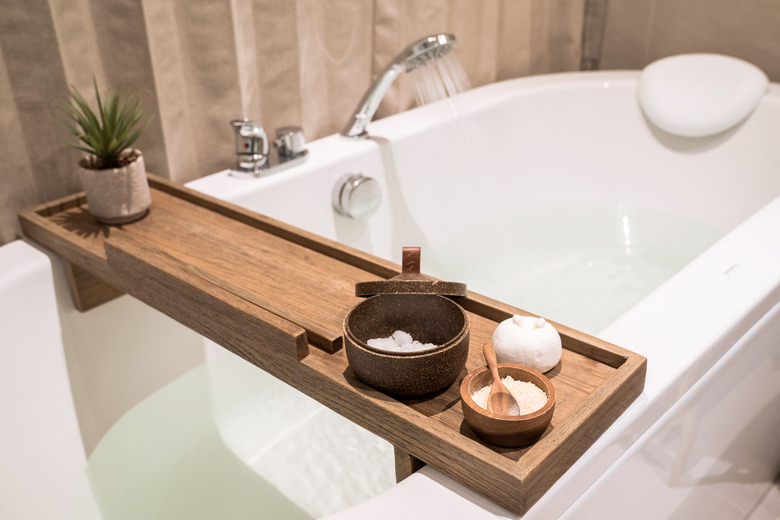How To Remove The Cover Plate On A Bathtub Drain Overflow With No Hole In The Faceplate
We may receive a commission on purchases made from links.
The cover plate protecting your tub's overflow drain may need to be removed occasionally, either for esthetic reasons — they can become unsightly and corroded over time — or so you can check for leaks. Most of these cover plates are secured with one or two screws and are easy to remove, but a few sleek, modern designs have no visible holes in the faceplate. They're not necessarily more difficult to remove, but it helps if you can identify the brand and model.
Identifying Your Overflow Plate
Identifying Your Overflow Plate
There are three simple strategies you can use to try to identify the brand and model of your no-screw tub overflow. The first is to simply type a search such as "tub overflow no holes" or "tub overflow no screw" into your favorite search engine. It's an easy and intuitive option, but you'll be left with the grunt work of opening many, many results in search of the plate you're looking for.
A second option is to snap a photo of your tub's cover plate, and then use a search engine's reverse image search to find pictures that look similar. You'll still need to scroll through a number of search results, but comparing images is much faster than reading multiple pages of text.
A third option, especially if your tub installation is relatively new, is to search for no-hole tub overflow covers at the site of a major retailer like Amazon or Home Depot and scroll through the images until you've identified the one you're looking for.
Once you've identified the brand, you should be able to find installation instructions on the manufacturer's site or through the retailer. Removing the cover is simply a matter of following those steps in reverse. When in doubt, you can simply look up removal instructions for a few popular brands, like the ones below, and see if those methods work with the cover plate you have.
Watco Innovator Cover Plate
Watco Innovator Cover Plate
One popular option is the Watco Innovator cover plate, part of a series of easy-to-install fixtures from that manufacturer. When it's installed, the drain is held in place by a black retainer nut that grips the drain to the tub. Once the retainer nut is installed, the cover plate slips down over the top of the nut from above and clicks into place.
To remove it, place your thumbs at the bottom of the cover plate and press gently upward until the plate snaps free of the underlying mount and pops off in your hand. Depending upon whether you're troubleshooting, cleaning or upgrading, you can snap the same cover plate or a new one over the same mount. Just make sure the opening is at the bottom, then slide it back over the mount until it clicks into place.
Westbrass No-Hole Faceplate
Westbrass No-Hole Faceplate
Another no-hole cover plate you may encounter is manufactured by Westbrass. This model is just as simple to remove and replace as the Watco, though it uses an entirely different mounting system. Like the embedded drains found in many shower stalls, the Westbrass unit simply unscrews from the underlying mount. It's available in a number of finishes, so you can easily swap out your current unit if you're upgrading your bathroom and changing the fixtures.
Kohler PureFlo Cover Plate
Kohler PureFlo Cover Plate
Kohler is a major player in the plumbing fixtures marketplace, so you may also encounter a no-hole cover plate like the ones in that company's PureFlo series. These are designed for compatibility with Kohler's PureFlo drains and are intended to be easily interchanged and upgraded.
To remove a Kohler plate, give it a quarter-turn counterclockwise and then pull straight back. Tabs on the cover plate will align with slots in the drain itself, and the cover should slide out easily. To replace the same cover, or an upgraded cover, align the tabs on the cover plate with the slots on the drain and press in firmly. Then give the plate a quarter-turn clockwise to lock it back into place.
